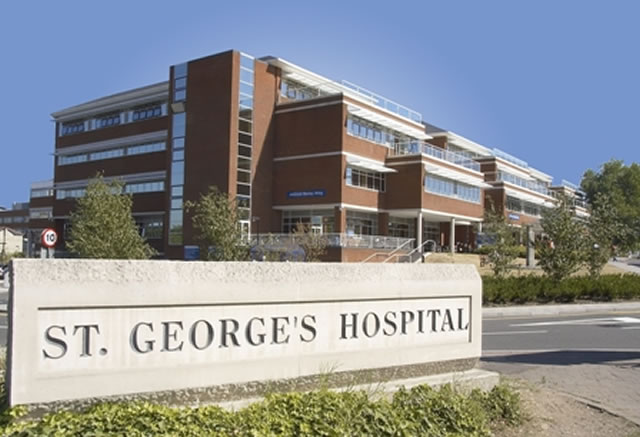St George’s Back On Track
"Amazing improvement" in finances at major South London hospital

Those of us living in South West London know that St. George’s University Trust, which is responsible for St George’s Hospital in Tooting and Queen Mary’s Hospital in Roehampton, has been through some difficulties in the last few years. But things are now looking up.
Wandsworth councillors have praised the Trust for “an amazing improvement” on its financial situation and dealings with patients.
Deputy Chief Nurse, Robert Bleasdale, said the Trust has “a financial recovery plan that forecasts a year-end deficit of £3 million for 2020, and we continue to be on plan to deliver that.”
This is a dramatic reduction from the deficit at the end of March this year, which was a staggering £45.5 million.
Speaking at the Adult Care and Health Overview Scrutiny Committee for Wandsworth council this week, Cllr Ian Lewer, who chairs the committee, said he was pleased to see that “most of the numbers have stabilised”, and that the report was “one of the most positive that I’ve seen from seeing these updates since the original CQC inspection”, which rated the trust as inadequate in 2016.
Last year this was boosted to ‘requires improvement’ and staff are hoping that the most recent inspection in July will see more progress.
The CQC’s final report is expected to be published at the end of this year.
Mr Bleasdale said initial feedback from the CQC was “positive” with “evidence of clear progress”, and that the Trust was “proud of the improvements we have made and continue to make”.
The Trust has seen a significant reduction in the number of patients waiting more than 52 weeks for their first treatment, down from 116 in February to just seven in June, placing the Trust ahead of its planned trajectory.
It has also exceeded its target for inpatient friends and family test scores, with 96.9 per cent of patients reporting a positive experience.
However, there is still some more work to be done.
When questioned about by Cllr Graeme Henderson about the reasons why the emergency performance in July was well below national standards, Mr Bleasdale said that “across London and nationally, for the A&E target, organisations have struggled to deliver the 95 per cent. Across London we have seen increased pressure throughout the summer”.
St George’s University Trust saw 86.4 per cent of patients within four hours, compared to the national target of 95 per cent. Mr Bleasdale noted issues with patients staying in hospital for longer, a lack of beds, and patients presenting themselves at times where there has historically been fewer staff on rota. He said the trust were reviewing the attendance pattern to counteract this.
Likewise, the Trust’s mortality review of patients who underwent cardiac surgery between April 2013 and September 2018 is having a knock-on effect for activity levels, causing financial implications for the trust.
Mr Bleasdale said: “There are some restrictions in operating practice for our surgeons so the higher risk cases are only being delivered by one surgeon. This has had an impact on the cases that we can deliver at the trust and they’re being referred to Guys and St Thomas’ and King’s, which is why it has had an impact on our productivity numbers at the moment.”
He also reported that the Trust had seen another ‘never event’ in July. Never events are serious and largely preventable patient safety incidents that should not occur. The event in July was the second for the Trust this year and involved a post-operative retained swab.
The patient has since been discharged and is recovering well, but the Trust have declared it as a serious incident, which is currently being investigated.
Sian Bayley - Local Democracy Reporter
September 17, 2019